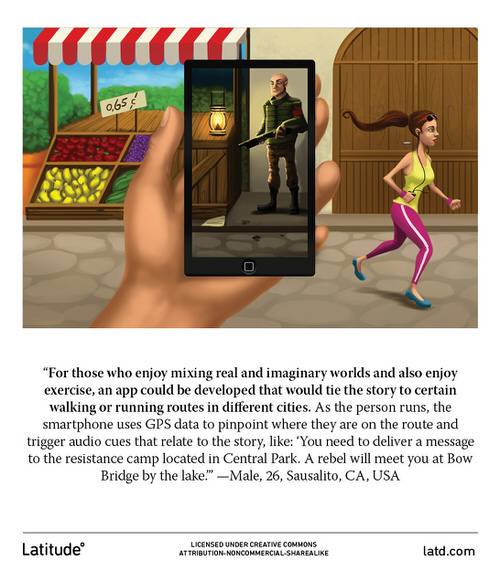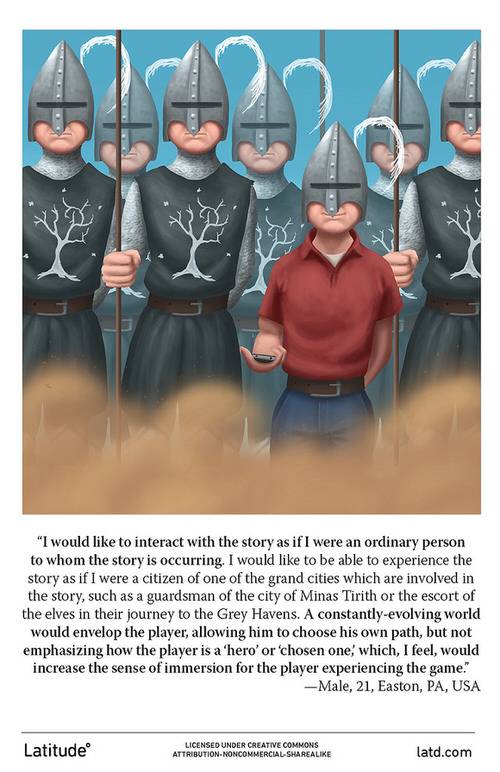Guest author Kim Gaskins is the director of content development and lead writer for Latitude, an international research consultancy.
Many of us go about our lives constantly surrounded by screens, immersed in various “stories”: movies, TV shows, books, plot-driven video games, news articles, advertising, and more. Whether we realize it or not, we’re creating new behaviors, routines, mindsets, and expectations around what we watch, read or play—which in turn presents new challenges and opportunities for creators and marketers.
In other words, while the fundamentals of good storytelling remain the same, technology is changing how stories can be told. But what does that mean exactly?
Since last year, Latitude, a strategic insights consultancy, has been conducting an ongoing Future of Storytelling initiative to understand what audiences want for the long haul. Below are eight predictions for the future of storytelling based on what we found. (More information about Latitude’s multi-phase research project is available here.)
Stories Come Out Of The Screen, Into The Physical World
We’ve seen plenty of cohesive cross-platform narratives, but where can you go from there? The “real world”—that’s where.
Thanks to technological advances like augmented reality and the Internet of Things, projects like Google’s Ingress are beginning to suggest that we should treat the actual world as another platform. We expect to see stories increasingly connected to physical spaces, from MMO games played out across a city to live action events to retail experiences.

Characters Will Become Connections
As our own social relationships play out more over digital media like Facebook, and technology enables characters to live beyond the screen, people will be able to interact with these characters in places once reserved for only fans.
Maybe some crazy AI program will enable this, or maybe it’s just a matter of writers or actors maintaining online identities for their characters. Either way—would you rather talk to your friend about James Bond’s mission, or talk to Bond himself?

Stories Will Unfold From Different Vantage Points
The analog version of this might be the 1990s film Rosencrantz and Guildenstern are Dead, which follows the exploits of two minor characters in Hamlet, retelling Shakespeare’s masterpiece from a wildly different point-of-view. In the future, audiences will be able to experience stories through a particular character’s eyes—and may be able to switch between characters at will.

Stories Will Be Told 24/7
As we develop deeper relationships and greater interactivity with characters, it’s only natural to think of them as having lives of their own—lives that exist in some parallel universe, and go on even when we’re not tuning in. We may receive text messages or alerts when something significant has happened during the course of a character’s day, or we may get “breaking news” alerts pushed to our smartphones when an important battle has been won.

Storytelling Goes Bottom-Up
People have been putting their own material on the Web for a long time now, but new business models have been slow to evolve. Big studios and production companies are just beginning to take audience participation seriously—such as with Syfy’s hybrid game/TV show Defiance.
Creators will continue to find elegant ways to incorporate audience ideas and participation into professional-quality programming and similar works, and they’ll do it in something close to real-time.

Stories Will Make The World A Better Place
As stories extend further into the real world, so will their potential to create positive change for both individuals and society. That might mean living a healthier life, supporting important causes, or something else.
More narratives will be designed to drive social action in more engaging ways—encouraging audience members to become active collaborators not just in narratives, but in the real world issues behind them.

Videos Will Offer One-Click Storefronts
The days of scouring the Web to figure out where you can buy your favorite TV character’s awesome outfit are over. Thanks to real-time apps, brands are syncing up the “Buy now” button with your favorite shows, giving an entirely new meaning to contextual relevance. It also raises the question, “Could second screens be more effective at driving commerce than primary screens?”

Passive Or Active Experience—It’ll Be Your Choice
There a ton of cool new possibilities for storytelling, but there are also different kinds of audiences with different desires. (To learn more about audience types, download The Future of Storytelling report.) In the future, audiences will be able to choose their desired “tier” of interactivity—from completely passive to wildly active—before engaging with a story.
That could mean the difference between merely observing as an onlooker (as with more traditional story experiences) to becoming a minor character to becoming the main character. Of course, this will require that storytellers have a good sense of their audiences so they can determine what’s too much or too little for different groups.

Images courtesy of Latitude

















